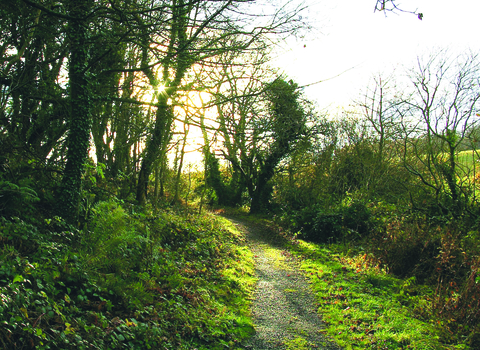Evelyn Howick Memorial. Image by: Steven Morris.
Evelyn Howick Memorial
Location
Know before you go
Dogs
When to visit
Opening times
24/7/365Best time to visit
April to AugustAbout the reserve
The reserve was created in memory of the late Lord Howick, formerly chairman of the Nature Conservancy Council and a former President of Northumberland Wildlife Trust from a ‘dormant’ quarry site. There are reminders of the site's active quarrying days, including the adjacent lime kilns which are a Grade II listed building. There is also a steel ammunition (explosives) shed made from a former ship's boiler, trackways connecting the quarry face to the lime kilns, a series of stone compartments (used for coal storage), a stone-lined pumping shaft with remains of headworks, a filled-in shaft (marked as a well on some maps), remnants of both rails and sleepers, and iron piping.
Most of the quarry has been back-filled with waste stone except for an area below the quarry face on the north side which has filled with water to form two ponds. Damp and water-logged areas are also present below the rock face on the west and south sides. The quarry waste is now covered with mosses, grasses and herbs with some scattered scrub. Mature scrub (mostly hawthorn) is to be found at the north-east corner of the reserve. An exclosure on the south side of the large pond has been fenced to exclude stock and originally to monitor the effects of different management regimes. A further exclosure was constructed in 1996 to enable newly-planted trees and scrub species to be protected from grazing.
The reserve's diversity of habitat creates favourable conditions particularly for birds, amphibians and invertebrates. The grassland, formerly species-poor, has now developed a range of flora. The wide variety of interest makes the reserve important for naturalists, geologists and historians as well as the casual visitor. Active management is required if its full potential is to be realised. The ponds around the edge of the site contain water plantain, bulrush and bur-reed, and are used by coots and moorhens, with frogs and smooth newts also present. Tufted duck, sparrowhawk and willow warbler are just a few of the bird species that can be seen at the reserve. Common mammals include stoats, moles and shrews. The grassland contains species such as bulbous buttercup, early purple orchid and mouse-eared hawkweed.

